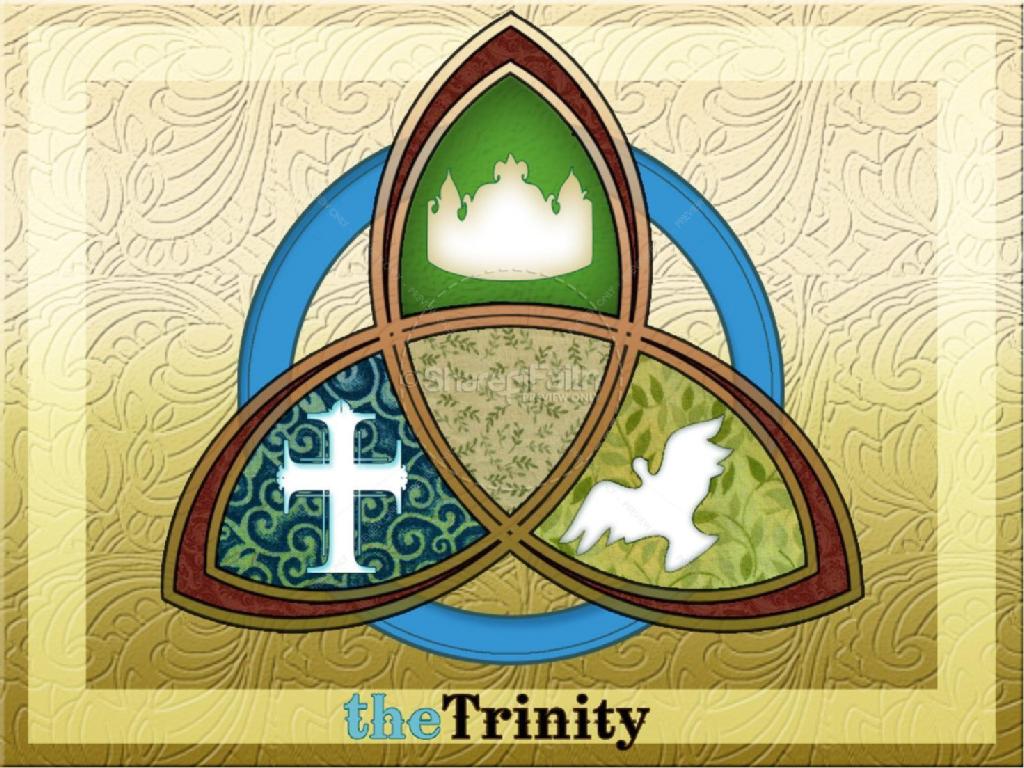The Neuroscience Of Resisting Temptation

Have you ever wondered why God asks us to resist temptation and practise self-control? At first glance, it might seem like God is just trying to limit our enjoyment of life, especially when the world tells us to “follow your heart” and “give in to what feels good.” But what if I told you that resisting temptation is not about taking away your joy, but about protecting and blessing your life — spiritually, emotionally, and even mentally?

I was recently watching a TV series with my wife (called Perception, if you’re interested) about a neuroscience professor who consults for the FBI. The series often gives some interesting facts about the brain and human behaviour, and in one episode the main character capped off the episode by talking about how resisting temptations benefits your mental health.
This piqued my interest, as it made me think of the obvious Scriptural connections, so I looked it up to see if the episode was accurate.
And it was!
A 2017 neuroscience research study highlights how beneficial self-control and resisting temptation are for your brain and mental health. These findings echo the timeless truths of Scripture, showing us that God’s design for self-control is not just a moral obligation but a pathway to wholeness and flourishing as a healthy person.
The Science Behind Resisting Temptation
The study on self-control and temptation explored the brain’s salience network — the system responsible for detecting what’s important — and found something really very interesting: people better at resisting temptation have a healthier dynamic between this network and other parts of the brain, such as the visual system. In other words, their brains are better at ignoring distractions and focusing on what truly matters.
Here are some of the benefits of self-control revealed by the study:
- Improved Focus — Resisting temptation strengthens your ability to stay on task and avoid distractions.
- Emotional Resilience — Self-control helps regulate emotions, making you less reactive and more at peace.
- Mental Clarity — It improves how your brain processes information, aiding decision-making.
- Protection from Harm — It reduces the risk of mental health issues like depression, addiction, and impulsive behaviour which may help mitigate some symptoms of ADHD by strengthening attention regulation and executive function.
- Spiritual Growth—Though not a part of the study, self-control aligns with God’s call for holy living and leads to greater spiritual maturity.
This isn’t just science talking; it’s evidence of God’s amazing design for your body and mind which has been testified to in the Scriptures for thousands of years, long before neuroscience could confirm it. I couldn’t help but be struck by this connection when I came across this study.
What Does the Bible Say?
The New Testament repeatedly highlights the importance of self-control and resisting temptation. These teachings are not arbitrary rules to suck the “fun” out of life, but divine guidance to help you thrive. Let’s explore how the Bible speaks to this:
- Self-Control is a Gift from God
The Bible teaches that self-control is a fruit of the Spirit (Galatians 5:22–23) and that God has given us a spirit of “power and of love and of self-discipline” (2 Timothy 1:7). The ability to resist temptation is not something we muster up alone; it’s a gift God gives to help us grow in Him and rely on His strength. - Resisting Temptation Brings Freedom
James 1:14–15 warns us that temptation, if left unchecked, leads to sin and ultimately to death. Science backs this up, showing that unchecked impulsivity can lead to destructive behaviours like addiction and emotional instability. God’s commands to resist temptation protect us from harm and lead us to freedom in Christ (John 8:36). - Your Mind Matters
Romans 12:2 urges us to “be transformed by the renewing of your minds.” Resisting temptation helps rewire your brain for good, strengthening healthy mental patterns and promoting peace. God’s design for self-control ensures that we not only have spiritual growth but also postive emotional and mental health and strength. - God’s Commands are Life-Giving
Proverbs 4:23 says, “Keep your heart with all vigilance, for from it flow the springs of life.” Just as the study revealed the importance of healthy brain dynamics in resisting temptation, the Bible reminds us that self-control protects our hearts and minds from harmful influences.
Not a Burden, But a Blessing
God’s call to resist sinful temptation is often misunderstood as a restriction on our freedom. In truth, it is an invitation to live a life of joy, peace, and flourishing. The benefits of self-control — improved focus, emotional stability, and protection from harm — are just a glimpse of what God intends for those who walk in obedience to Him.
Jesus says that He will give us rest because His “yoke is easy, and [His] burden is light” (Matthew 11:28,30). His commands shouldn’t be something that weighs us down, but rather give us life, and life to the full (John 10:10)! In a similar vein, Paul writes in Galatians 6:1–2 that we should help those who have fallen to temptation and to bear one another’s burdens so that we may fulfil the “Law of Christ”.
For the love of God is this, that we obey his commandments. And his commandments are not burdensome (1 John 5:3)
Jesus Himself demonstrated perfect self-control, resisting every temptation (Hebrews 4:15). He did this not only to set an example for us but to empower us through His Spirit. When we walk in line with the Spirit, resisting temptation becomes less about our own willpower and more about God’s power working in us, in spite our weaknesses, as that’s where God’s power is made perfect (2 Corinthians 12:9).
Encouragement for Your Journey
If you’re struggling to resist temptation, take heart! You’re not alone, and God has already given you the tools you need:
- Lean on the Holy Spirit, who gives you the strength to say no (1 Corinthians 10:13).
- Meditate on Scripture, renewing your mind daily (Psalm 119:11).
- Remember that God’s commands are for your good, leading to a life of peace and wholeness (John 14:27).
Resisting temptation isn’t about losing fun — it’s about gaining life. Trust in God’s design and walk in the freedom and joy He intends for you. Science may just be catching up, but Scripture has told us all along: self-control is a gift for your good.
Blessed is anyone who endures temptation. Such a one has stood the test and will receive the crown of life that the Lord has promised to those who love him. (James 1:12)
Stay strong, walk by the Spirit, and embrace the life God has planned for you!
Sources and Further Reading
- Rosa Steimke, Jason S Nomi, Vince D Calhoun, Christine Stelzel, Lena M Paschke, Robert Gaschler, Thomas Goschke, Henrik Walter, Lucina Q Uddin, Salience network dynamics underlying successful resistance of temptation, Social Cognitive and Affective Neuroscience, Volume 12, Issue 12, December 2017, Pages 1928–1939, https://doi.org/10.1093/scan/nsx123
- Salience network dynamics underlying successful resistance of temptation — PMC
- Functional connectivity in a triple-network saliency model is associated with real-life self-control — ScienceDirect
- Salience network dynamics underlying successful resistance of temptation | Social Cognitive and Affective Neuroscience | Oxford Academic
- The Salience Network: A Neural System for Perceiving and Responding to Homeostatic Demands — PubMed
- Individual variation in resisting temptation: Implications for addiction — ScienceDirect
- Salience network — Wikipedia
Leave a comment Like Back to Top Seen 164 times Liked 0 times
Enjoying this? Consider contributing regular gifts for this content on Patreon.
* Patreon is a way to join your favorite creator's community and pay them for making the stuff you love. You can simply pay a few pounds per month or per post that a creator makes, and in return receive some perks!
Subscribe to Updates
If you enjoyed this, why not subscribe to free email updates and join over 800 subscribers today!
My new book is out now! Order today wherever you get books
Recent Posts
Luke J. Wilson | 06th January 2025 | Christmas
As the Church celebrates Epiphany, we reflect on the Magi's visit to the Christ child, guided by a star—a sign of God’s revelation to the nations. This story, steeped in wonder and mystery, has sparked fascination for centuries. What was this “Star of Bethlehem” that led the wise men to Jesus? Was it a miraculous light, or could it have been a natural astronomical event designed by the Creator to herald the birth of the King of Kings? The chart is from the SkySafari app The Great Conjunction In December 2020, the world witnessed a rare astronomical event called a “great conjunction.” Jupiter and Saturn appeared so close in the night sky that they seemed to merge into a single brilliant light. Such conjunctions are infrequent, occurring roughly every 20 years, but the alignment of 2020 was the closest in nearly 800 years. These celestial phenomena prompt awe and wonder, reminding us of Psalm 19:1: “The heavens declare the glory of God.” They also offer an opportunity to consider how the natural world might point us to the divine. Could a similar conjunction have been the famed “Star of Bethlehem”? Saturn and Jupiter appear to close in on each other as the Great Conjunction 2020 approaches on 21 December (apparent distance given in degrees and arcminutes). Credit: Pete Lawrence Astronomy and the Magi The Magi, often referred to as “wise men from the East,” were likely Persian astrologers skilled in interpreting the stars. Around 7 BC, a triple conjunction of Jupiter and Saturn occurred in the constellation Pisces. To the Magi, this alignment carried profound symbolism. Jupiter, the planet of kingship, coronations, and the birth of kings. In Hebrew, Jupiter was known as Sedeq or “Righteousness,” a term also used for the Messiah. Saturn, associated with divine protection Pisces, later linked to the birth of Jesus as the “fisher of men” In September of 3 B.C., Jupiter came into conjunction with Regulus, the star of kingship, the brightest star in the constellation of Leo. Leo was the constellation of kings and was associated with the Lion of Judah. Together, these signs might have suggested the birth of a royal figure in Israel. Compelled by this celestial message, the Magi embarked on their long journey, seeking the child born to be King. Following the Star The journey of the Magi culminates in Bethlehem, where the star appears to “stop” over the place where the child was. This detail aligns with the phenomenon of retrograde motion, where planets appear stationary in the night sky due to their orbits. Could Jupiter have been this “star,” guiding the Magi at just the right moment? In December, 2 BC, the Magi arrived and visited Jesus in Bethlehem. At this point, Jesus may have been about a year or two old — toddler age. The verse in Matthew 1:11 suggests Jesus was no longer a baby at this point based on the Greek word used: παιδίον (paidion) meaning a young child. Jupiter was then right above Bethlehem when viewed from Jerusalem due to its paused retrograde motion, which lasted for about six days, which aligns with the Biblical text: Matthew 2:9 When they had heard the king, they set out; and there, ahead of them, went the star that they had seen at its rising, until it stopped over the place where the child was. A Sign of Revelation Epiphany invites us to marvel not only at the star but at the God who uses creation to reveal His glory. Whether the Star of Bethlehem was a miraculous light or an astronomical event, it points to Jesus, the true Light of the World. In Jesus, God’s love is made manifest — not just to Israel but to all nations. The Magi’s journey reminds us of our own pilgrimage of faith. Like them, we are invited to seek Christ, to bow in worship, and to offer Him our treasures: our hearts, our lives, our devotion, as “living sacrifices” (Rom 12:1). Jesus, the True Star As we celebrate Epiphany, let us remember th...
Luke J. Wilson | 06th January 2025 | Archaeology
The discovery of an 1,800-year-old silver amulet in Frankfurt, Germany, has captured the attention of archaeologists and theologians alike. Known as the “Frankfurt Silver Inscription,” this artefact is the earliest known evidence of Christianity north of the Alps and serves as a great insight to early Christian theology and liturgical practice. Its early date (230–270 AD) sets it apart from previously known artefacts, which are at least 50 years younger. While there are historical references to Christian communities in Gaul and Upper Germania during the late 2nd century, reliable material evidence of Christian life in the northern Alpine regions generally only dates to the 4th century. This amulet offers new insights into the life and faith of early believers, revealing their theology, liturgical practices, and adaptation of existing traditions. 1. Invoking St. Titus: A Connection to Apostolic Roots One of the most remarkable features of the inscription is its invocation of St. Titus, a disciple and confidant of the Apostle Paul. This early reference highlights the theological importance of Apostolic authority and continuity. Titus, known for his leadership within the early church, symbolises the rootedness of Christian faith in the teachings and mission of the Apostles. In this context, the invocation of a saint also invites a deeper exploration of the “cult of saints,” a term scholars use to describe the veneration of saints within Christian tradition. The cult of saints became a significant aspect of Christian worship in the 4th and 5th centuries, with practices such as the commemoration of martyrs, the dedication of churches to saints, and the belief in their intercessory power. The earliest documented evidence of this practice, including the veneration of relics and the dedication of feast days, often centres on martyrs who bore witness to their faith during times of persecution. However, the invocation of St. Titus in the “Frankfurt Silver Inscription” predates these later developments by over a century, suggesting that the practice of seeking the intercession or spiritual protection of saints may have roots earlier than traditionally believed. This discovery contrasts with historical accounts that identify the late 3rd and early 4th centuries as the period when such practices began to gain prominence within the wider Christian community. As such, the amulet not only sheds light on early Christian devotion but also challenges prevailing assumptions about the origins and development of saintly veneration. Icon of Saint Titus 2. The Trisagion: Early Liturgical Development The phrase “Holy, holy, holy!” — known as the Trisagion — appears prominently in the inscription, marking one of the earliest recorded uses of this liturgical formulation in a Christian context. Though widely recognised in the 4th century, its presence here challenges traditional assumptions about the timeline of liturgical development. This suggests that elements of Christian worship, likely adapted from Jewish practices, were formalised earlier than previously thought. 3. Paul’s Christ Hymn: Scripture as the Foundation of Worship The inscription includes an almost verbatim quotation from Philippians 2:10–11: “At the name of Jesus every knee should bend, in heaven and on earth and under the earth, and every tongue should confess that Jesus Christ is Lord.” This demonstrates the early integration of Pauline theology into Christian liturgy and devotion. The explicit use of Holy Scripture highlights the centrality of Christ’s lordship in early Christian belief, even before the formal canonisation of the New Testament. 4. A Sacred Object for Protection and Proclamation The amulet, containing sacred text, was likely carried as a personal object of devotion and spiritual protection. Such items underscore the blend of Christian faith with ancient traditions of carrying protective talismans. This use of...
Luke J. Wilson | 23rd December 2024 | Christmas
The Christmas tree is one of the most recognisable symbols of the festive season, adorning homes, churches, and public spaces with its evergreen beauty. But where did this tradition originate, and how did it become a central feature of Christmas celebrations? Looking into the history of the Christmas tree has turned out to be a fascinating historical story woven from various cultural and theological strands. The Paradise Tree and the Feast of Adam and Eve The connection between the Christmas tree and the Feast of Adam and Eve offers a large clue into its origins. In medieval Europe, December 24th was observed as the feast day of Adam and Eve, a commemoration tied to their expulsion from Eden. One of the most notable elements of this feast was the “Paradise Tree,” used in mystery plays and home displays to symbolise the Tree of Knowledge in the Garden of Eden. These trees, typically evergreen, were decorated with apples to represent the forbidden fruit and wafers symbolising the Eucharist. This imagery reflected both humanity’s fall into sin and God’s redemptive plan through Christ. The Paradise Tree served as a visual catechism of sorts, teaching the story of salvation from the Fall to the Redemption. In a later tradition the wafers were replaced by cookies of various shapes, and candles, symbolic of Jesus as the light of the world, were often added to the trees. Pre-Christian Traditions and the Evergreen Evergreens have long been associated with life and resilience in the darkest days of winter. In pre-Christian European traditions, evergreen boughs were used during festivals like the Roman Saturnalia and the Germanic Yule. These practices celebrated the endurance of life through the cold and darkness, offering hope of the spring to come. While these customs were not inherently Christian, they provided a cultural framework that could be adapted to Christian theology. The evergreen tree, in this context, became a symbol of eternal life in Christ, as suggested by John 10:28: “I give them eternal life, and they will never perish.” Martin Luther and the Candlelit Tree A significant figure in the history of the Christmas tree is the Reformer Martin Luther. According to tradition, Luther was struck by the beauty of a starry winter sky shining through the branches of an evergreen tree. To share this moment of wonder with his family, he brought a tree into his home and decorated it with candles to represent Christ as the “Light of the World” (John 8:12). While this story is likely apocryphal, it reflects the theological connection Christians saw in the evergreen tree as a symbol of Christ’s enduring presence and light in the darkness. Luther’s influence in Protestant Germany may have helped popularise the use of Christmas trees in Christian households. The Spread of the Christmas Tree The tradition of the Christmas tree gained popularity in Germany during the 16th and 17th centuries. By the 18th and 19th centuries, German immigrants brought the custom to other parts of Europe and North America. One pivotal moment in its wider adoption was the depiction of Queen Victoria and Prince Albert around a decorated Christmas tree in an illustration published in the Illustrated London News in 1848. This royal endorsement sparked a surge in the tradition’s popularity, particularly in Britain, where it came to symbolise the domestic warmth and joy of the holiday season. Prince Albert, Queen Victoria, and the British royal family gathered around the Christmas tree at Windsor Castle, from the Illustrated London News, 1848. Source: Britannica St. Boniface and the Sacred Oak One of the most compelling narratives about the Christmas tree’s origins involves St. Boniface, an English missionary whose evangelistic efforts in 8th-century Germany played a pivotal role in shaping this enduring custom. According to tradition, Boniface encountered a group of pagans venerating an oak tree dedicated to Thor, the Norse ...
Luke J. Wilson | 18th December 2024 | Archaeology
New discovery proclaims Jesus as “Son of God” a century earlier than previously thought. An exciting archaeological discovery has recently come to light: researchers have unearthed an 1800-year-old silver amulet in Frankfurt, Germany. This amulet provides the earliest known evidence of Christianity north of the Alps and disrupts previously held ideas about the spread of the faith, namely that Christianity didn’t get to the German region around the fourth century. The amulet, dating from approximately 230 to 270 AD, was found in 2018 beneath the chin of a man’s skeleton during excavations at a Roman burial site near the former town of Nida, now part of Frankfurt’s northwestern suburbs. 3rd-century burial with silver amulet at the neck. Credit: Michael Obst, Monument Office of the City of Frankfurt am Main Inside the amulet was a delicate silver scroll, measuring about 91 millimetres in length, inscribed with an 18-line Latin text. Due to the fragility of the foil, researchers employed advanced imaging techniques, including computed tomography (CT) scans, to virtually unroll and decipher the inscription. Inscription digitally unscrolled. Credit: LEIZA. / Prof. Dr. Markus Scholz The inscription invokes Jesus Christ's name, identifying Him as the “Son of God,” and includes a Trisagion (“holy, holy, holy”), marking the earliest known use of this liturgical phrase. It also quotes lines from the Epistle to the Philippians (Philippians 2:10–11) in an early Latin translation, demonstrating the early dissemination of Pauline theology in this region. This discovery challenges previous understandings of the spread of Christianity in Europe, suggesting that devout Christian communities existed north of the Alps earlier than previously documented. Before this find, the earliest reliable evidence of Christianity in this area was associated with Maternus, bishop of Cologne, who participated in the Synod of Rome in 313 AD. Translation of the Inscription Here is the text of the Frankfurt Silver Inscription translated into English, with some of the missing/damaged words added in brackets to help make sense of the inscription: (In the name?) of St. Titus.Holy, holy, holy!In the name of Jesus Christ, Son of God!The lord of the worldresists to the best of his [ability?]all seizures(?)/setbacks(?).The god(?) grants well-beingAdmission.This rescue device(?) protectsthe person whosurrenders to the willof the Lord Jesus Christ, the Son of God,since before Jesus Christbend all knees: the heavenly ones,the earthly andthe subterranean, and every tongueconfess (to Jesus Christ). The amulet’s exclusive Christian content, devoid of polytheistic elements common in similar artefacts from that time, underscores early Christians’ distinct identity and devotion amid a predominantly pagan society. This find not only enhances our understanding of early Christian history but also highlights the resilience and faith of believers during times of persecution in the Roman Empire. Similar amulets from this era typically contained inscriptions with elements from Christian, Jewish, and paganism all blended together. The important aspect of this inscription is that there is a noticeable lack of reference to Yahweh, angels, or any local pagan deities, highlighting the exclusive Christian nature of this amulet. This not only underscores the devotion of the wearer but raises a lot of questions about Christianity in what was once the cultural and administrative hub of Roman Germania. As scholars continue to study this artefact, it serves as a tangible testament to the early presence and enduring legacy of Christianity in Europe, rewriting known history, and showing that all of those myths about Jesus’ deity being an invention of Constantine in the fourth century are a complete fabrication. This should inspire us as believers today to reflect on the historical roots of our faith, the steadfastness of early Christians in proclai...









